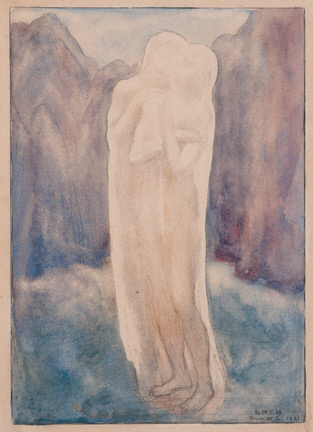What They Did
The researchers studied the effects of artificial light on the movements of pond bats traveling from their roosting areas to their foraging areas. Because these bats forage over lakes and ponds and use linear bodies of water such as rivers to navigate, the researchers placed temporary lampposts with computer-controlled LEDs at the centers of bridges over streams known to be followed by the bats.
The light colors varied between red, amber, yellowish white, and bluish white, and each color was tested at two different intensities. A multi-directional microphone was used to record the bat echolocation sounds, allowing their flight paths to be reconstructed. Data was collected from five bridges for two nights per bridge, once with lower intensity light and once with higher intensity. For each night, the four light colors plus the no-light control were activated in random order; this process was repeated three times, and the researchers ensured that each repetition on a given night had a different order. The light was positioned to reflect on the water in the direction the bats were flying from; they had to fly towards the light to reach their foraging area.
The researchers found no effect of light on flight speed. The only significant effect was that the bats had straighter flight paths when exposed to the bluish white light. The researchers suggest that the light used was not intense enough to disturb the bats, since they had witnessed bats turning away from much more intense light in a previous study.
Further Exploration
The effect of light pollution on nocturnal animals is a concern for conservation. (For lots of information, see https://myfwc.com/conservation/you-conserve/lighting/pollution). Diurnal animals can be attracted to the light, making them more vulnerable to predators. Nocturnal animals might avoid lit areas, meaning they lose habitat even if the area isn’t otherwise altered. Long wavelengths such as red and amber are less of a problem to nocturnal animals because their rod-based visual system doesn’t perceive them as strongly, and path lighting that’s near the ground causes less disruption to wildlife than tall streetlights.
Sometimes simply reducing the light makes a difference: animals from nesting shorebirds to endangered fireflies have returned to abandoned habitat when companies and municipalities have agreed to dim recently installed lights (see https://www.nwf.org/Home/Magazines/National-Wildlife/2023/Summer/Conservation/Light-Pollution-Wildlife). We also may not need as much light for safety as we think we do. Several studies have shown no effect from street lighting on either crime or accidents, and glare from bright lights can make it harder for our eyes to adjust. Instead of seeing the whole area in dim light, we don’t see anything at all in shadowed areas. (see https://darksky.org/resources/what-is-light-pollution/effects/safety/).
Light pollution also stops us from seeing the stars; I’m lucky if I can see Orion and Taurus during the right time of year. Many animals also use the stars to find their way (see https://royalsociety.org/blog/2018/01/how-animals-follow-the-stars/), another potential conservation concern for light pollution. It would be interesting to find out how much reduction in outdoor nighttime lighting people would accept, but that’s a rabbit hole for another day!

Image credit: Rauno Kalda
https://commons.wikimedia.org/wiki/File:The_pond_bat_(Myotis_dasycneme).jpg






